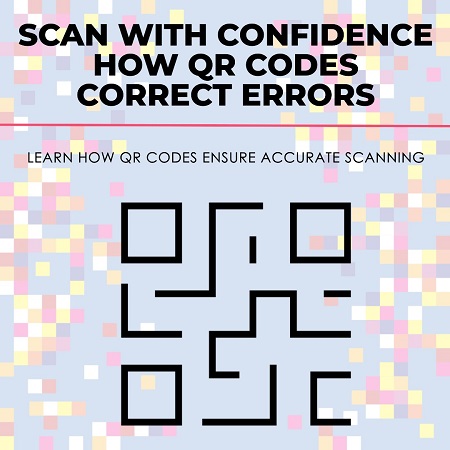QR codes have become an integral part of various industries, serving as a quick and efficient medium for data storage and retrieval. One of the most remarkable features of QR codes is their ability to correct errors during scanning, ensuring that the data is accurately decoded even if the code is partially damaged or obscured. This article aims to delve into the fascinating world of QR code error correction, explaining the technology that makes these digital markers so robust and reliable.

The Anatomy of a QR Code
Before diving into error correction, it's essential to understand the basic structure of a QR code. A QR code consists of black and white squares arranged in a grid pattern. This pattern encodes data, which can range from simple text and numbers to more complex forms like URLs and multimedia files. The QR code also contains specific regions for timing patterns, alignment, and other functional elements.
The Concept of Error Correction in QR Codes
Error correction in QR codes is based on Reed-Solomon error correction algorithms. These algorithms allow the QR code to store additional data known as "error correction codewords," which can be used to reconstruct the original data if parts of the code are damaged or unreadable.
Levels of Error Correction
QR codes offer four levels of error correction:
- Level L: Corrects up to 7% of data errors.
- Level M: Corrects up to 15% of data errors.
- Level Q: Corrects up to 25% of data errors.
- Level H: Corrects up to 30% of data errors.
The higher the level, the more robust the QR code, but this also means that the QR code will be more complex and may require more space.
How Error Correction Works During Scanning
When a QR code is scanned, the scanning device captures an image of the code and begins the decoding process. If the code is partially damaged or obscured, the Reed-Solomon algorithms come into play. Here's how it works:
- Data Extraction: The scanner extracts both the original data and the error correction codewords from the QR code.
- Error Identification: The algorithms identify any discrepancies between the scanned data and the error correction codewords.
- Data Reconstruction: If errors are found, the algorithms use the error correction codewords to reconstruct the original data.
- Final Output: The corrected data is then processed, and the intended action (like opening a URL or displaying text) is executed.
Practical Implications
The error correction feature is particularly useful in real-world scenarios where QR codes may be exposed to wear and tear, poor lighting, or obstructions. For example:
- Outdoor Advertising: QR codes in outdoor billboards can withstand environmental damage.
- Packaging: QR codes on product packaging remain scannable even if partially damaged.
- Ticketing: Event tickets with QR codes can still be scanned even if they are crumpled or stained.
Final Thoughts
The error correction capabilities of QR codes are a testament to the robustness and reliability of this technology. By understanding how QR codes correct errors during scanning, one gains a deeper appreciation for the intricate engineering behind these seemingly simple patterns. Whether you're a marketer, developer, or end-user, this feature ensures that QR codes deliver accurate and reliable data, making them an invaluable tool in today's digital landscape.